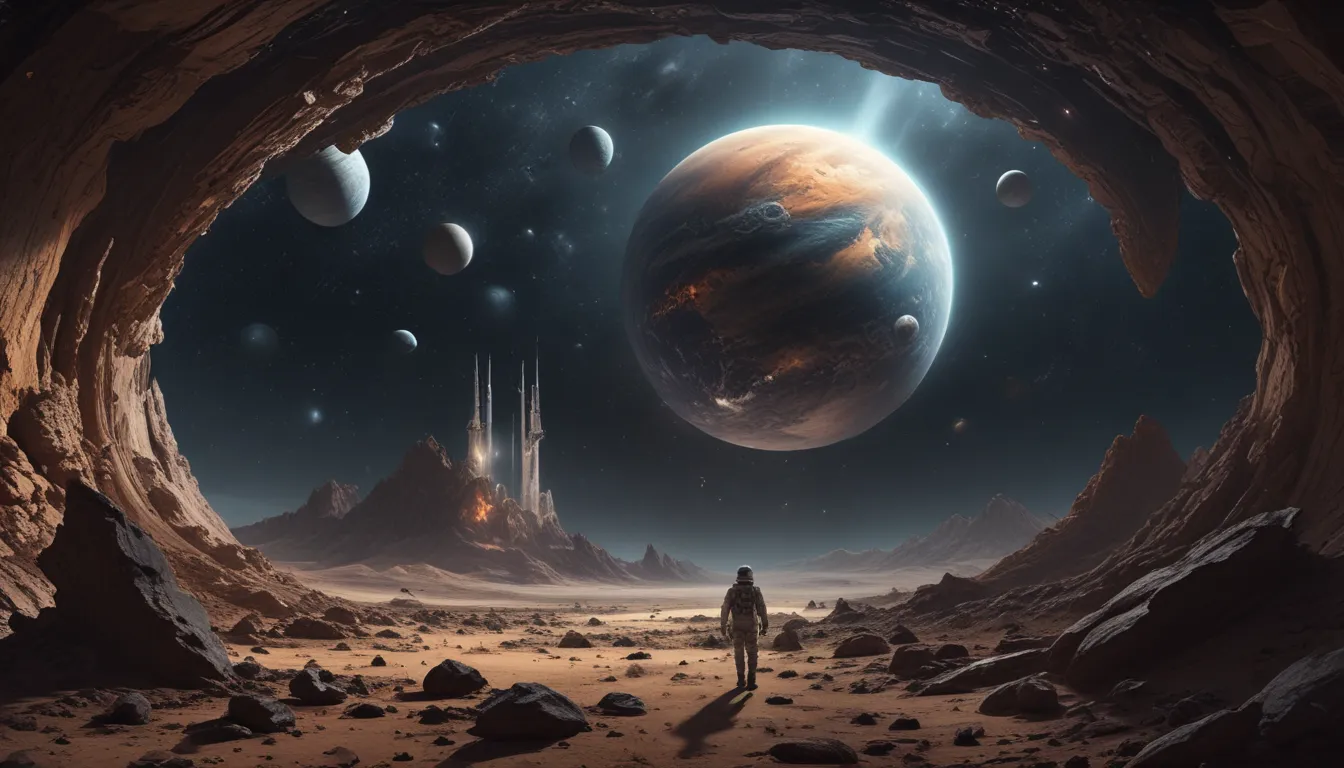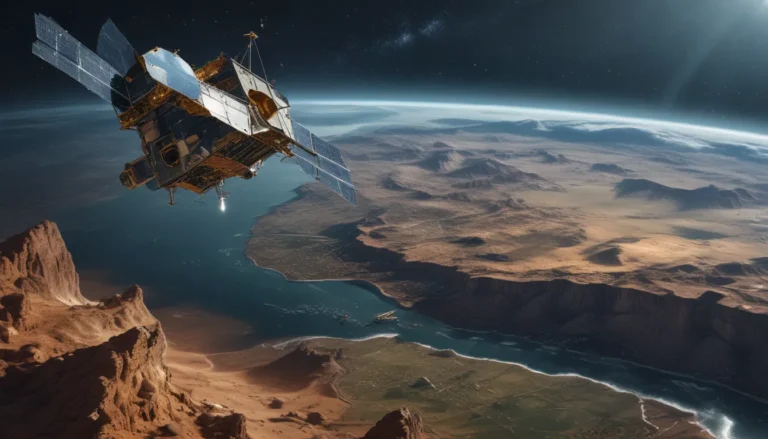The pictures we use in our articles might not show exactly what the words say. We choose these pictures to make you interested in reading more. The pictures work together with the words but don’t take their place. The words still tell you the important facts.
The vast expanse of space has always been a source of wonder and curiosity for humanity. The space industry, with its groundbreaking achievements and technological innovations, continues to capture imaginations around the world. From the first journey into space to the exploration of distant planets, the space industry pushes the boundaries of human knowledge and opens up possibilities that were once unimaginable. In this article, we will delve into 16 unbelievable facts about the space industry that will leave you awe-inspired and hungry for more knowledge about the mysteries beyond our planet.
Discovering the Cosmos: Unveiling Unbelievable Facts
Yuri Gagarin: A Pioneer in Space Exploration
In 1961, Soviet cosmonaut Yuri Gagarin made history by becoming the first human to travel to space aboard the Vostok 1 spacecraft. His courageous feat paved the way for future space exploration and inspired generations of aspiring astronauts.
The International Space Station: A Marvel in Orbit
The International Space Station (ISS) stands as the largest human-made structure in space, spanning an area roughly the size of a football field. It serves as a research laboratory and living space for astronauts from various countries, orbiting the Earth at a speed of approximately 28,000 kilometers per hour.
Hubble Space Telescope: Capturing the Beauty of the Universe
Launched in 1990, the Hubble Space Telescope has provided stunning images of distant galaxies, revolutionizing our understanding of the universe. Its high-resolution images have offered invaluable insights into the nature of celestial objects, stars, and galaxies.
Mars: A World of Wonders
Mars, the red planet, boasts the tallest volcano in the solar system, Olympus Mons, standing about 13.6 miles high. Additionally, Valles Marineris, a system of canyons on Mars, stretches over 2,500 miles in length, making it the deepest known canyon in the solar system.
Space Tourism: The Future of Exploration
Companies like SpaceX and Blue Origin are actively working towards making space travel accessible to the general public, paving the way for space tourism. Soon, tourists will have the opportunity to experience the wonders of space firsthand.
Illuminating the Cosmos: Enlightening Insights
The Sun: Our Solar System’s Powerhouse
The sun, accounting for 99.86% of the solar system's mass, is the largest object in our solar system. It provides light, heat, and energy to sustain life on Earth, playing a vital role in the balance of our planet's ecosystem.
Technological Advancements: From Space to Earth
The space industry contributes to technological advancements on Earth, with innovations in satellite communications, GPS systems, material science, and robotics finding applications in various industries. The collaboration and innovation in space exploration drive progress on our planet.
Pluto: A Mysterious Dwarf Planet
Pluto, formerly considered the ninth planet in our solar system, was reclassified as a "dwarf planet" in 2006 due to its size and orbit characteristics. Despite its reclassification, Pluto remains a fascinating object of study for astronomers and researchers.
Voyager 1: Venturing Beyond Our Solar System
Launched in 1977, the Voyager 1 spacecraft has left our solar system, entering interstellar space. It continues to send valuable data back to Earth, offering insights into the vast expanse of space beyond our solar system.
Embracing the Future: A World of Exploration Awaits
Colonizing Other Planets: A Vision for the Future
Scientists and space agencies are exploring the possibility of colonizing other planets, with Mars being a primary focus. The ultimate goal is to ensure the survival of the human species by establishing colonies on new worlds.
Weather Forecasting: Satellites in the Skies
Satellites play a crucial role in weather forecasting by gathering essential data about atmospheric conditions. These orbiting satellites enable meteorologists to predict weather patterns accurately and issue timely warnings for severe weather events.
Earth-Like Exoplanets: A Glimpse of Other Worlds
Advancements in telescopes and detection techniques have led to the discovery of Earth-like exoplanets in the habitable zone of distant stars. Scientists are excited about the possibility of finding extraterrestrial life on these promising planets.
Space Industry Collaboration: A Global Endeavor
The space industry serves as a major driver of international collaboration, with space agencies from around the world working together on space missions. This collaboration fosters shared resources, expertise, and knowledge, promoting diplomacy and cooperation.
The Speed of Light: A Universal Constant
The speed of light, approximately 299,792 kilometers per second, is a fundamental constant in our understanding of the cosmos. According to the theory of relativity, nothing can travel faster than the speed of light, shaping our exploration of the universe.
Conclusion: Embracing the Wonders of Space Exploration
In conclusion, the space industry continues to amaze and inspire us with its remarkable achievements and ongoing endeavors. From historic milestones to future ambitions, the space industry challenges human potential and expands our understanding of the cosmos. As we embark on the next chapter of space exploration, the possibilities for discovery and exploration are truly endless.
Explore More: Answering Your Questions
-
How many countries have a space agency?
Currently, more than 70 countries worldwide have their own dedicated space agencies, showcasing the global interest in space exploration. -
How many satellites are orbiting the Earth?
As of 2021, there are roughly 2,800 operational satellites orbiting the Earth, providing essential services and data for various applications. -
Are there any plans for manned missions to Mars?
Yes, many space agencies, including NASA, have plans to send humans to Mars within the coming decades, marking a significant milestone in human exploration. -
How far is the farthest known galaxy?
The farthest known galaxy, GN-z11, is located approximately 13.4 billion light-years away from Earth, offering a glimpse into the early universe. -
Can we travel faster than the speed of light?
Based on current scientific understanding, traveling faster than the speed of light is not feasible. However, researchers continue to explore possibilities for future advancements in space travel. -
How long does it take for a spacecraft to reach the Moon?
It takes an average of 3 days for a spacecraft to reach the Moon's vicinity, depending on the speed and trajectory of the mission.
As we continue to uncover the mysteries of the universe and push the boundaries of exploration, let us embrace the wonders of space with curiosity and enthusiasm. The space industry offers a gateway to endless possibilities and discoveries, inspiring us to reach for the stars and expand our understanding of the cosmos. Join us on this remarkable journey of discovery and exploration as we unravel the secrets of the universe together.






